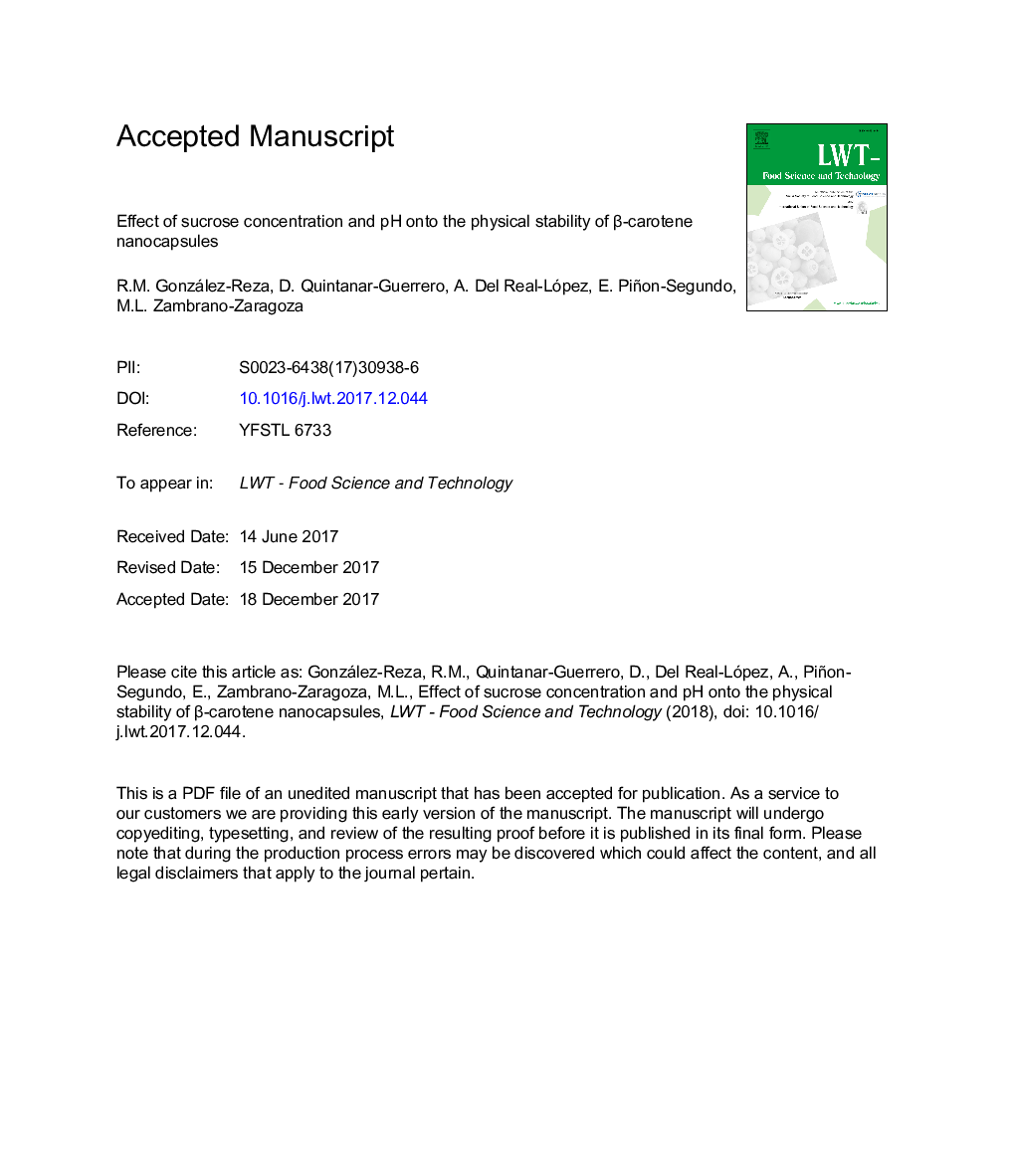| Article ID | Journal | Published Year | Pages | File Type |
|---|---|---|---|---|
| 8891626 | LWT - Food Science and Technology | 2018 | 35 Pages |
Abstract
The incorporation of β-carotene into foods has a great impact due to its important biological properties and characteristic orange color that is of great interest for applications that require a natural colorant. However, it has limitations because of its lipophilic nature. Given this problem, an effective alternative is incorporating it as a functional ingredient in nanoencapsulation form, since this presents a significant benefit compared to emulsions/nanoemulsions; namely, increased solubility in aqueous media. In this study, the physical stability of dispersions was evaluated in relation to three factors: pH, sucrose concentration and different concentrations of β-carotene nanocapsules. Samples were characterized in terms of morphology, particle size, zeta potential, colorimetry, turbidity, and diffuse reflectance. Results show that no significant aggregation was detected, as revealed by turbidity (Ïâ¼cte) and diffuse reflectance (pâ¯>â¯0.05), but that significant changes in chromaticity did occur during the storage period (pâ¯<â¯0.05) in all samples analyzed. The particle size obtained during monitoring was always below 300â¯nm. Minimal changes in zeta potential in the samples was evaluated. Given that these β-carotene nanocapsules showed only minimal changes in physical stability during storage, they may represent an effective option as a component of functional beverages and foods, as well as nutraceutical products.
Related Topics
Life Sciences
Agricultural and Biological Sciences
Food Science
Authors
R.M. González-Reza, D. Quintanar-Guerrero, A. Del Real-López, E. Piñon-Segundo, M.L. Zambrano-Zaragoza,
